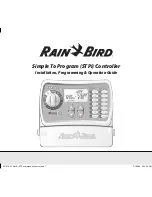
P/N: A-22075/6, Rev. 1.1
Page 29 of 45
6.0 Special Guidelines and Precautions on Pressure-Testing and Adjustment
CAUTION: Safety Protection.
Wear appropriate safety glasses or face-shield and
protective clothing when conducting this procedure. Valve testing involves high-
velocity air and water flow that can cause injury.
6.1.1
Determining Applicable Pressure Values
Refer to AAR publication “Regulations for Tank Cars.” Appendix A applies specifically to valves. This
section prescribes the start-to-discharge pressure (STD), the vapor-tight pressure (VTP) and their
tolerances.
NOTICE
: A “popping pressure” is not specified. It is only necessary to ascertain the
STD pressure as pressure is increased, and to establish the vapor-tight pressure as
pressure is being reduced. (STD is defined as a continuous discharge in contrast to
the start-to-leak pressure, which is defined as the first bubble leak. Vapor-tight is
defined as the pressure at whch no further fluid is detected. Midland recommends
that no bubbles be observed for two (2) minutes at vaport-tight.)
6.1.2
Test Stand and Gauge Requirements
It is recommended that the test stand mounting must be equivalent to the AAR M1002 figures
E19.14 through E19.23 for the valve being tested. The pressure gauge must meet the
requirements of D4.5 Test Gauge Standards and must be date-tagged.
CAUTION
NOTICE
















































